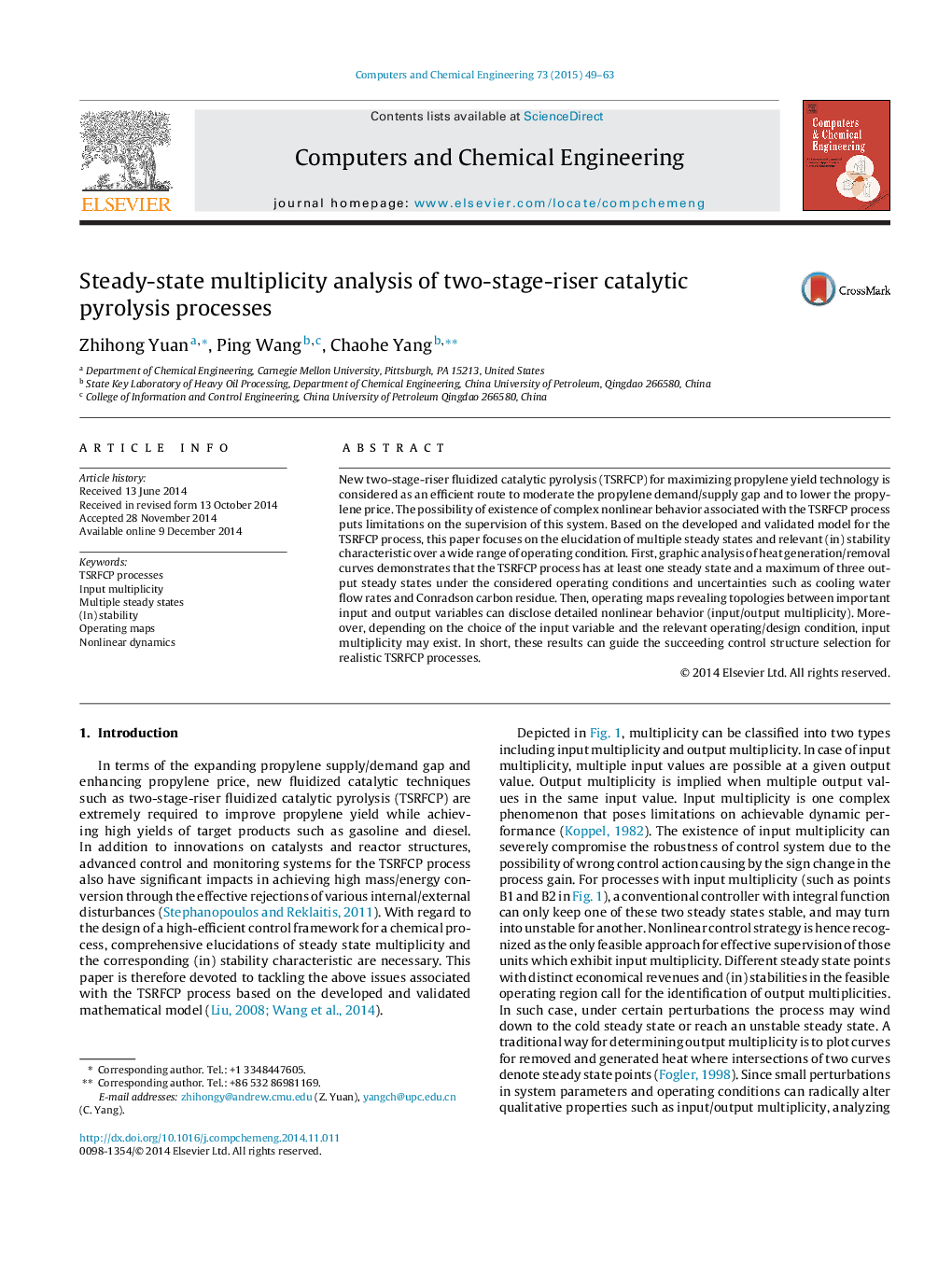| کد مقاله | کد نشریه | سال انتشار | مقاله انگلیسی | نسخه تمام متن |
|---|---|---|---|---|
| 172304 | 458531 | 2015 | 15 صفحه PDF | دانلود رایگان |

• Graphic analysis to revel the number of steady states.
• Slope condition is sufficient for analyzing stability of the TRSFCP process.
• We figure out the operating maps for the TSRFCP process.
• Steady-state maps detect the undesirable operating conditions.
• The research can support the control systems design.
New two-stage-riser fluidized catalytic pyrolysis (TSRFCP) for maximizing propylene yield technology is considered as an efficient route to moderate the propylene demand/supply gap and to lower the propylene price. The possibility of existence of complex nonlinear behavior associated with the TSRFCP process puts limitations on the supervision of this system. Based on the developed and validated model for the TSRFCP process, this paper focuses on the elucidation of multiple steady states and relevant (in) stability characteristic over a wide range of operating condition. First, graphic analysis of heat generation/removal curves demonstrates that the TSRFCP process has at least one steady state and a maximum of three output steady states under the considered operating conditions and uncertainties such as cooling water flow rates and Conradson carbon residue. Then, operating maps revealing topologies between important input and output variables can disclose detailed nonlinear behavior (input/output multiplicity). Moreover, depending on the choice of the input variable and the relevant operating/design condition, input multiplicity may exist. In short, these results can guide the succeeding control structure selection for realistic TSRFCP processes.
Journal: Computers & Chemical Engineering - Volume 73, 2 February 2015, Pages 49–63